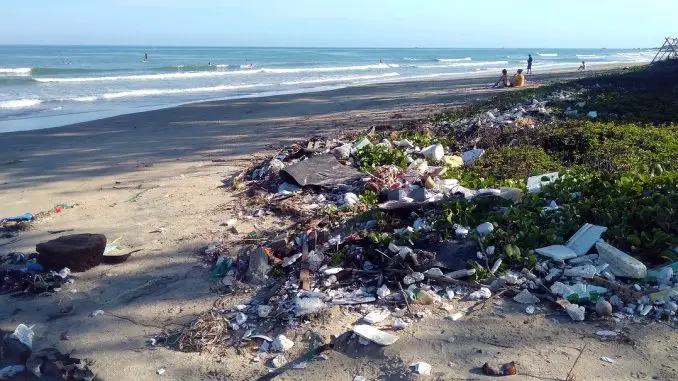
That’s why we need a new plastic plan!
Food packaging, bottles, plastic bags, fishing nets and fibers from synthetic clothing. Every year, quantities of plastic animals are damaged in the sea. Whales, seals, seabirds, turtles and many other animals get trapped in the debris and drown, starve to death or are seriously injured. The animals that eat plastic debris suffocate or suffer internal damage, and the plastic pieces can give them a false sense of saturation that makes them starve.
Many fish and other marine animals mistaken for small pieces of plastic, microplastics, for plankton. We humans are at the top of the food chain. How we are affected by eating animals that, in turn, have eaten plastic, there are no studies yet.
Where does the plastic come from in the sea?
A large part of the plastic that ends up in the sea is disposable packaging and plastic bags. The majority of all debris found in the sea has been dumped on land and taken to the sea with rainwater, winds and rivers. In the sea, the plastic debris is slowly decomposed into smaller parts and eventually becomes so-called microplastics, which are not broken down in several hundred years and which are almost impossible to capture. Lost fishing gear, such as nylon nets, is also broken down into microplastics. But before they are disintegrated, the nets float around like death traps for animals, so-called ghost yarns.
Microplastics are also washed out in the seas from our treatment plants. Synthetic fabrics, such as fleece blankets and polyester and acrylic clothing, release microplastics when washed. A polyester fleece blanket or sweater strips away thousands of microplastic particles at each wash.
Although the wastewater treatment plants handle most microplastics, millions of microplastics particles still end up in our waterways every hour. In addition, some hygiene products contain added microplastics. Among other things, there may be plastic in exfoliating, toothpaste and makeup.
Most of these plastic particles are trapped by the treatment plants and end up in the sludge. Part of this sludge is spread as fertilizer on ecological fields, the rest is used as filling material.
On land, a large proportion of the microplastics comes from the wear of car tires. There is currently no research on how many of the particles that reach the oceans, but most of them end up in the roads. Car tires are often reused in artificial green, which in itself leaks microplastics. There is also no research on how the plastic that ends up in the soil affects the ecosystems.
A new plan for plastic
Plastic is in many ways a good material. It is light, inexpensive and has several uses where it is difficult to replace, for example in hospital equipment, computers and cars.
But much of the plastic used today is unnecessarily used. We want to reduce the amount of unnecessary plastic in society and increase the recycling of plastic. Today, large quantities of hard-to-break down plastics are made from crude oil, which is often only used once before it is burned up and contributes to climate change – or ends up in nature. Therefore, we need a new plan for plastic.
The plastic has to enter the circular economy where everything we manufacture is recycled or recycled to the greatest possible extent and, at the very least, thrown and fired. The best thing is if a purchased plastic product can be used for a long time, and then reused or recycled to a similar product. Plastics in hygiene products must be banned and textile plastic fibers are effectively captured by washing machines and treatment plants before they reach the seas.
Leave a Reply